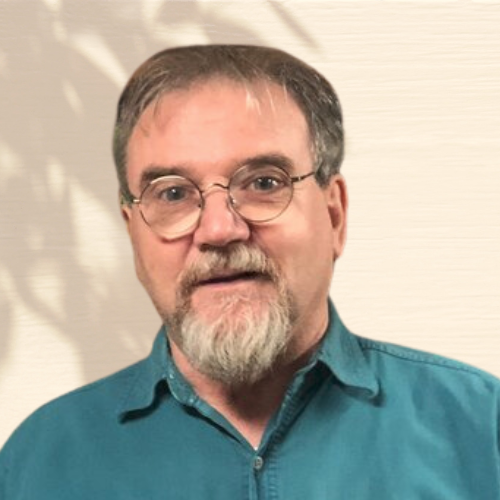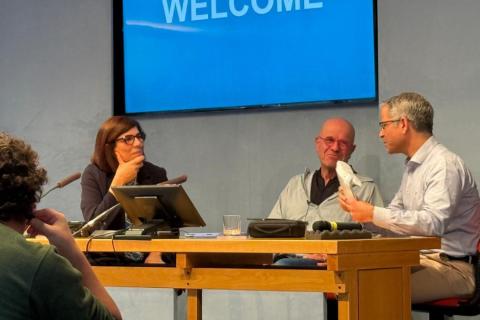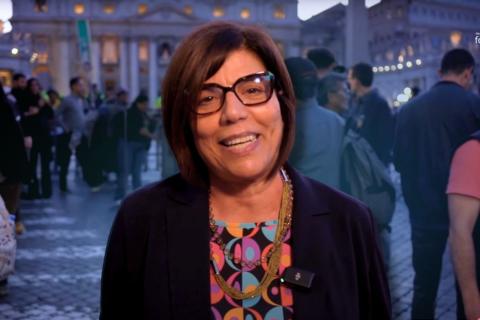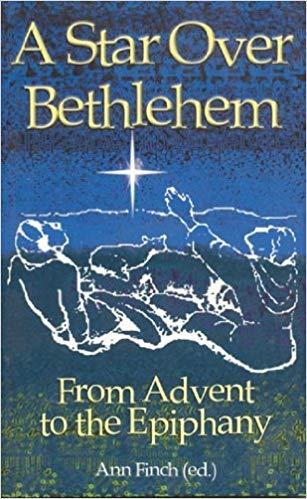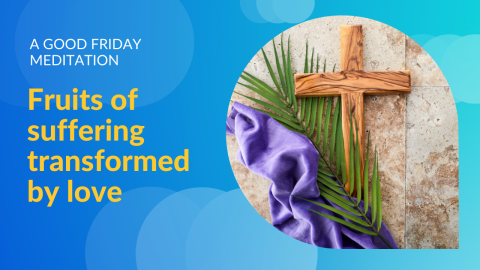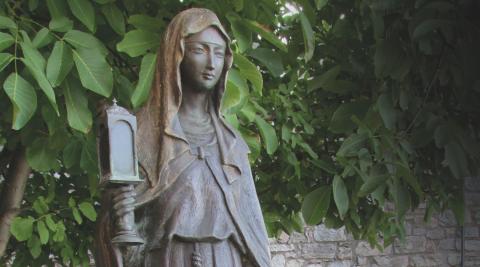Being contentedly silent for some part of each day can be an ongoing challenge. Yet it is a gift
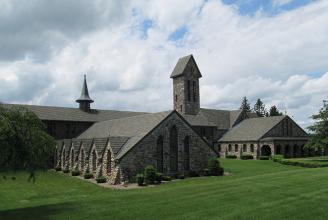
Photo by wikipedia.org
O Silence, what can be said of you that is not better spoken of wordlessly? “Nothing, no-thing.” And yet there is perhaps something thanks to the mystics who, by silence, prioritized their love of God and wrote about it. They tell us of their preferred detachment of images and objects for listening intently to the one who reveals an identity and a relationship: “I am who am;” “be still and know.”
Though often solitaries, mystics wrote to assist fellow seekers, providing formative mystical literature for would-be aspirants. The late Trappist monk, abbot and acclaimed spiritual writer Thomas Keating, well-steeped in this experiential tradition, wrote as his forebears did.
Keating and several monastic peers began a contemplative movement open to laypersons in the 1970s. They championed the cause of silence, and they wrote.
“Silence is God’s first language; everything else is a poor translation,” he taught.
Sitting in silence was not simple
He invited my friends and me, once youthful faith-based activists, to sit in silence. It was counterintuitive for us. Though we had been duly nurtured in the faith, educated in Catholic schools, and participants in liturgical life in parishes, we didn’t have a clue about this interiorly purifying and healing prayer, this meeting with the one who speaks in silence.
My initial experience was of being on a spiritual honeymoon. Before too long, I began to experience a purification that frightened me as it exposed my fears, hostility, desire for control and the honoring of multiple exterior claims upon my time that disguised my loneliness and vulnerability.
This type of prayer invited believers to abandon themselves to divine providence and seek security in “God alone.” Some of us had trauma histories that made feeling safe in silence difficult.
I had much to work through personally as I reluctantly acknowledged a host of trust issues. But I also learned that the experience of purification is not just a lamentable category or a uniquely personal phenomenon.
Silence brings the human condition to the fore in its less pretty and acceptable dimensions, often repressed and stored in the subconscious. We learned by meditating that we were not just lovely, well-meaning young people, although we were that too. We had issues!
I indeed preferred being in denial about them. But unseemly, harsh realities about these unbecoming sides of ourselves surfaced in meditation, and they stung.
Love was deeper
Keating brought to us a sense of not being surprised by these complex, shadowy elements in ourselves. He maintained that recognizing our actual human condition was not the kiss of death but rather the beginning of an authentic spiritual life. Love was deeper.
Meditation would lead to a profound, hopeful reality accessible to the trustful. There is undoubtedly an uneasy time to be had by those being purified. It certainly felt to me like the kiss of death!
Yet Thomas taught that difficulties in prayer are the means, par excellence, to an ever-greater and ultimately liberating surrender, whereby our poverty of spirit is met by the lavish love and mercy of the one who, in the words of spiritual guide Henri Nouwen, calls us “beloved.”
That teaching was and remained mightily consoling and served as a motivation to keep up a silent prayer practice.
When less is so much more
Most of us are not invited to pay attention to the space between words, expand our awareness of that space, or elongate it such that a new spiritual horizon comes into view. But we were, and that put us in touch, however feebly, with the deep and wide “ground of being” upon which all words and symbols rest.
In time, we found ourselves less attracted to the rote and abstract, though still partial to the human tendency to be wordy! But the emphasis here was on “less.”
Being contentedly silent for some part of each day can still be an ongoing challenge. Yet it is the gift of the contemplative disposition. Hence, daily periods of silent prayer affect the entirety of a life, a process akin to adding yeast to the dough so it can raise the whole loaf on its way to becoming bread.
We were still subject to what Buddhist teaching describes as the “monkey mind.” Our thoughts jump hither and thither and do so mainly on their own terms. We seemed nearly helpless in the face of their power to have our mental preoccupations swing wildly from branch to branch, and we, along with them!
Frère Roger Schutz of Taizé, who guided many young people in prayer, was asked what the saddest thing was. He replied, “A wound under a heart.”
It seems the meditation I was called to was both a recognition of the wounds I would conceal by placing them under my heart, and an excellent option to let the love that is already and always beneath the heart put the wounds atop where they could be more easily released.
Listening and waiting
An old friend, Johnnie Buffalo, a farmer in southern Colorado, put this another way when we sat by a campfire out in his field one evening. He was talking about meditation when he noted a beautiful night sky with a bright moon obscured by fantastic cloud formations that would come and go in front of it.
Meditative prayer was a vigil, he suggested. Just wait for the clouds to pass. Then, the moonlight will shine gloriously.
Meditation has this waiting quality to it. Waiting, too, is a form of listening.
When we let the seemingly relentless flow of thoughts go by like boats on a river, and we approach a stillness deep in the river, a precious gift can be had—the monkeys quiet down a bit! It seems never to be perfectly quiet, but it does increase the level of placidity such that we come to know of the possibilities of being gifted with some measure of inner peace that might contribute to better prospects for outer world peace.
The art in attentiveness
A spaciousness attunes us to the heavenly voice that speaks in wordlessness and loving attention and teaches for those who would learn from such prayer.
The American pacifist poet William Stafford (1914-1993) was a learned figure in the art of attentiveness, teaching, “We know the current is there, hidden; and there are comings and goings from miles away that hold the stillness exactly before us. What the river says, that is what I say.”
Have you ever felt a tug to attend to the river instead of the boats or pined for more personal or global peace? If so, you may want to follow up on such longings.
May you spend the time necessary to bathe your spirit and mind in the soothing waters of the river of deep prayer, in what lies beneath the passing boats (the self’s surface thoughts) and what refreshes and gladdens the “City of God.”
That city needs gladdening, as noted Jesuit leader Pedro Arrupe observed. “Nowadays the world does not need words, but lives which cannot be explained except through faith and love for Christ’s poor.”
Another Jesuit theologian, Karl Rahner, boldly stated, “The Christian of the future will be a mystic or not at all.” That statement seems an ominous warning and a word of great promise.
What might this spiritually rich heritage of those who love God through silence mean to a busied people such as us or a newcomer to such prayer? They can teach us a lot!
Yet there is no substitute for the salvific lessons silence graciously teaches.


